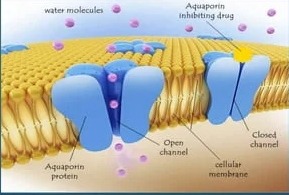

Helping you get to a dryer lifestyle
For Hyperhidrosis
Sweating Matters Blog
Keeping You Current with What Matters in Hyperhidrosis


Rate the Sweating Matters blog / More Information
Come Back Soon! We post regularly.
Helping Create Dryer Lifestyles
16 July 2024
Protein Channels May be at the Heart of Excessive Sweating
Hyperhidrosis, particularly in the context of primary focal hyperhidrosis, involves an overactivity of sweat glands that results in excessive sweating. One of the key physiological factors contributing to this condition is the role of aquaporins.
Aquaporins are integral membrane proteins that serve as channels in cells, facilitating the movement of water molecules across cell membranes. In sweat glands, specifically in the sweat ducts, aquaporins play a crucial role in the regulation of sweat production. They enable the movement of water from the surrounding cells into the ducts, where it mixes with electrolytes and other components to form sweat.
Research has shown that certain types of hyperhidrosis, especially those involving overactive sweating of the palms and soles (palmoplantar hyperhidrosis), may be associated with an increased expression or activity of aquaporin proteins in sweat glands. This heightened expression can lead to an enhanced movement of water into the sweat ducts, thereby contributing to excessive sweating.
In fact, a study* has demonstrated that human axillary sweat glands from individuals with primary focal hyperhidrosis (PFH), had a greater level of aquaporins (AQP5) and AQP5 mRNA than their non-hyperhidrotic (NH) counterparts. The latter being the genetic strands that code for the AQP5 proteins, or channels. The study also showed that the the two groups (PFH and NH) had an equal number of sweat glands and that structurally, the sweat glands were the same.
Understanding the role of aquaporins in hyperhidrosis is important for developing targeted treatments. For instance, therapies that aim to modulate aquaporin function or expression could potentially help regulate sweat production and alleviate symptoms in individuals with hyperhidrosis. However, further research is needed to fully elucidate the mechanisms underlying aquaporin involvement in hyperhidrosis and to explore therapeutic interventions based on these findings.
Dermatology 2016;232:150–155













